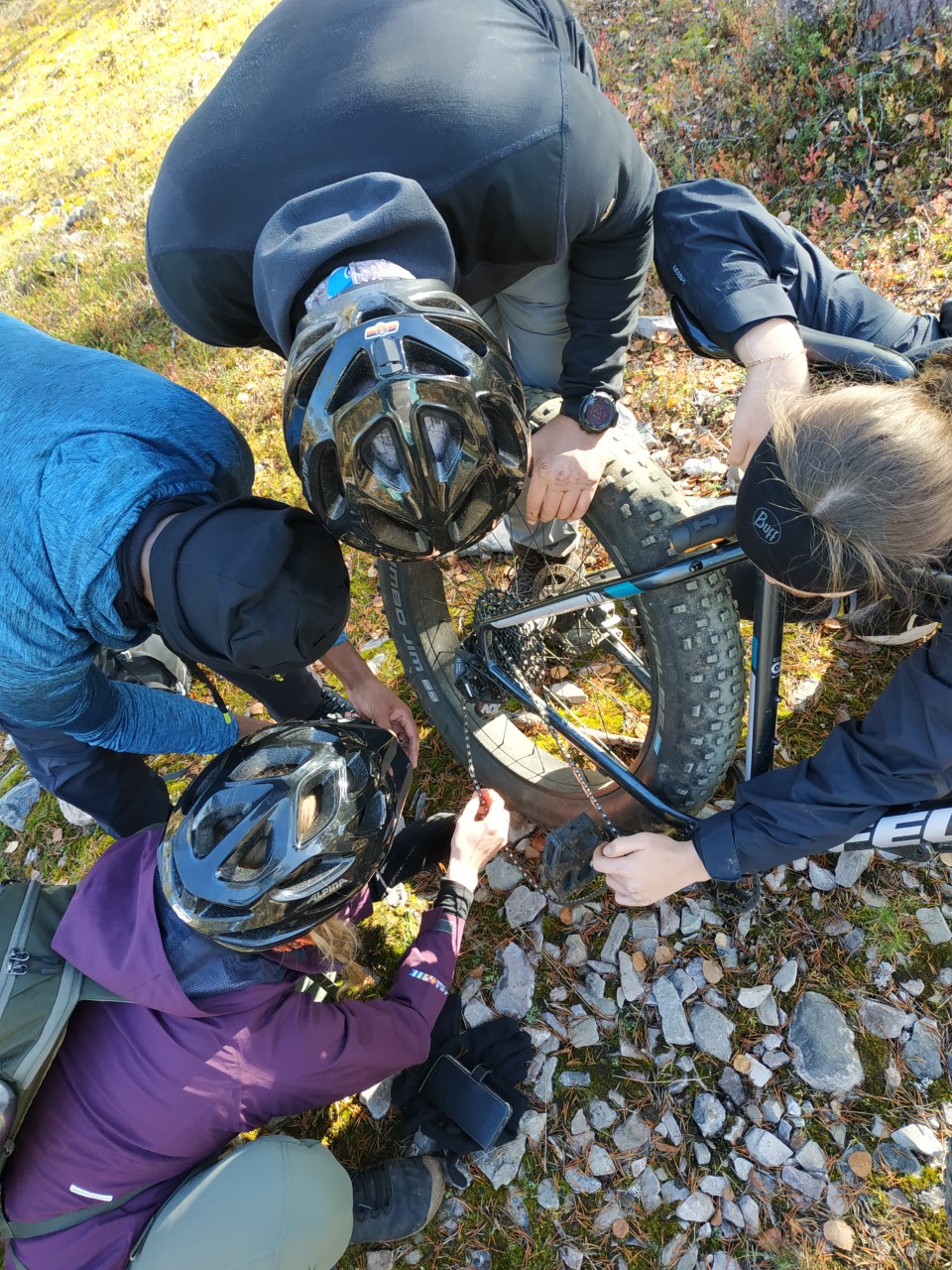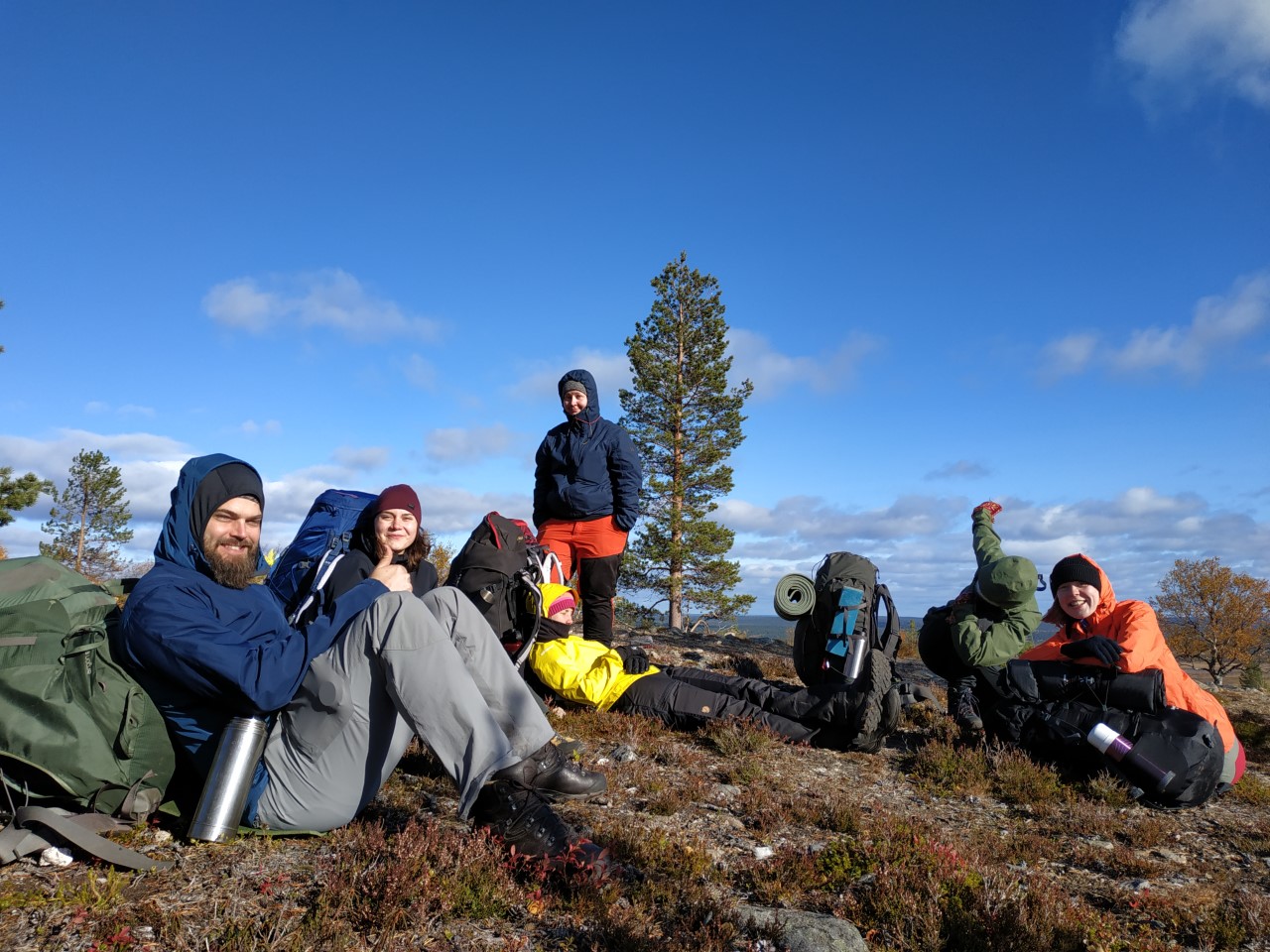All leaders make mistakes. They are a part of life. Successful leaders recognize their errors, learn from them, and work to correct their faults. – John Maxwell
Agya Dhaugoda and Emmi Sarvijärvi
Attitude reflects leadership. But what does it really mean? Since the beginning of our studies in adv nture and outdoor education at Humak UAS, we have been working together with our classmates as a team. The curriculum of the degree includes a lot of courses where working in a group is as crucial as working independently. Sometimes you lead and other times you follow.
Attitude Affects Everyone
What is attitude? Daniel Katz defines attitude as, “the predisposition of the individual to evaluate some symbol, object or aspect of his world in a favourable or unfavourable manner” (1960, 68). The leader of a group must recognize the different expressions of an attitude. Katz explains that an attitude can be verbal or non-verbal expression, as opinions and behaviour respectively.
I have experienced firsthand how to become an effective leader during my practical training in Lapland last year. I was training as a safari activity guide with Lapland Safaris Oy and led many groups in snowshoe, husky and reindeer safaris. I learnt that in order to be an effective leader, one must also be a good communicator. Good communication enhances the group, and a leader’s positive attitude ramps up the energy of the entire group. Body language tells a lot about the attitude of a person.

Frozen face on the first day of leading the group in snowshoeing. (Photo: Agya Dhaugoda)
In an outdoor setting, a leader must think about different factors when conducting a group activity. Preparation is the weapon and flexibility is your shield. My first day as a leader was a bit challenging. The temperature had dropped to minus 32 degrees Celsius and my first client was a family from London with two twelve-year-old kids. As a leader, my first decision-making point was to change the route to the closest fireplace point. Had I not been optimistic, the group would not have felt comfortable doing the safari in such extreme conditions.
I had encouraged the parents to break the snow in order to make a path and they loved the experience. I was sharing my knowledge about Finnish Lapland, as well as the flora and fauna found in the area. The kids enjoyed playing in the snow and the parents were happily watching them. My first safari was a success, and the family enjoyed their time snowshoeing with me. Luckily, everything went as planned.

Attitude can have a big influence on a target group. (Photo: Emmi Sarvijärvi)
Leaders Set an Example to the Group
When I look back, my day had started with frustration and I was a bit cranky. The weather was so cold that my face was freezing when I walked for 40 minutes to reach the office. I was not in a happy mood. Once I reached the office and started preparing for the safari, my mood changed and so did my attitude. Attitude is a choice. Everyone has a bad day and the way you act has a significant impact on others. From my first safari, I realized how my attitude had set the tone for the group and my trust in them had built their confidence to try something they had never done before, a brand-new experience for them. As John Graham states in his book, the confidence you have in others influences how well they perform (2002, 19)
Attitude can have a big influence on a target group, so it is important to be conscious of your mood and your body language.
A leader might inspire others to become just like them by owning the latest model of a high-end wristwatch, having expensive branded clothes, or being very skilful at lighting a fire and knowing a lot about the surroundings. However, if the leader is acting careless or arrogant, they are not inspiring anyone. Peter Whittaker, who is a world-known climber and guide, believes that the leader must be not only a role model but also a source of energy and inspiration for the entire team (2014).

Proof that growth happens with the right attitude. Smiling faces on top of Pallas-Ylläs fells during the day two of the expedition. (Photo: Emmi Sarvijärvi)
If the group is feeling negative about the weather or the group has a social conflict at hand, the group leader must lead the conversation in a better direction. That is why a leader should be conscious of their actions and aware of the fact that a wrong attitude can create chaos, risks, and hazards.
Seeing yourself as a leader is already a big step in becoming a good leader. I have learned that having effective communication, being able to take responsibility, knowing your limits, and having a great attitude towards change are the fundamental skills while leading groups and leading myself.
I got to experience the power of attitudes during the Lapland expedition with two other instructors and 19 students. Living and working together for more than two weeks straight made me realize how much of a difference can a positive attitude can make in a leadership position.
References:
Graham, J. (2002). Outdoor leadership: Technique, Common Sense & Self-confidence (4th ed.). Seattle: Mountaineers.
Katz, D. (1960). The functional approach to the study of attitudes. Public Opinion Quarterly, 24(2), 163–204. https://doi.org/10.1086/266945
Nadler, R. & Luckner J. (1997) Processing the experience.
Räty, K. (2011) Elämyspedagoginen ohjaaminen, ajatuksia kokemuksellisesta oppimisesta, Outward Bound ry, 40-43 Peter Whittaker (2014) Summits Adventure Travel (https://ethansalter.com/)






